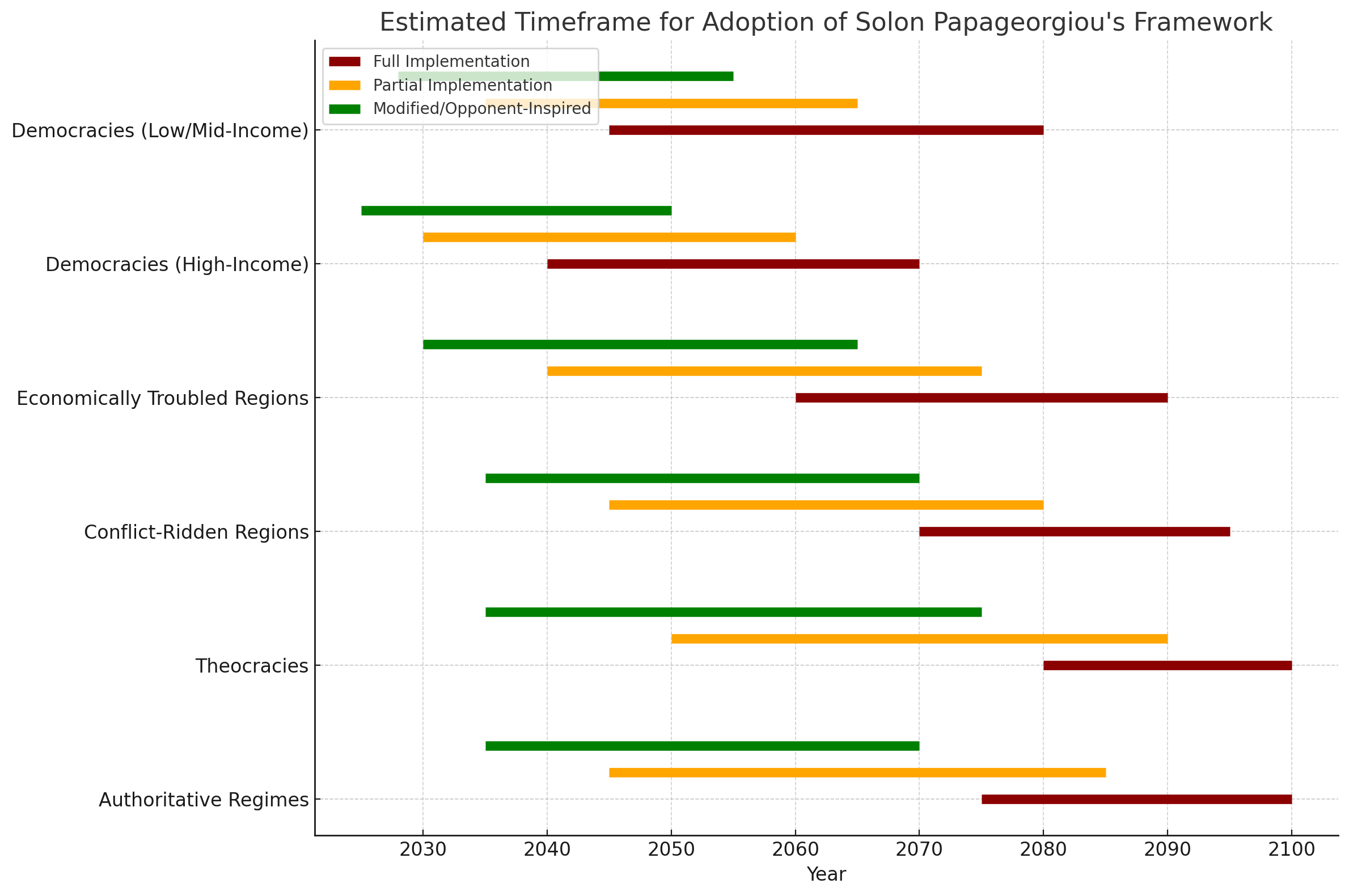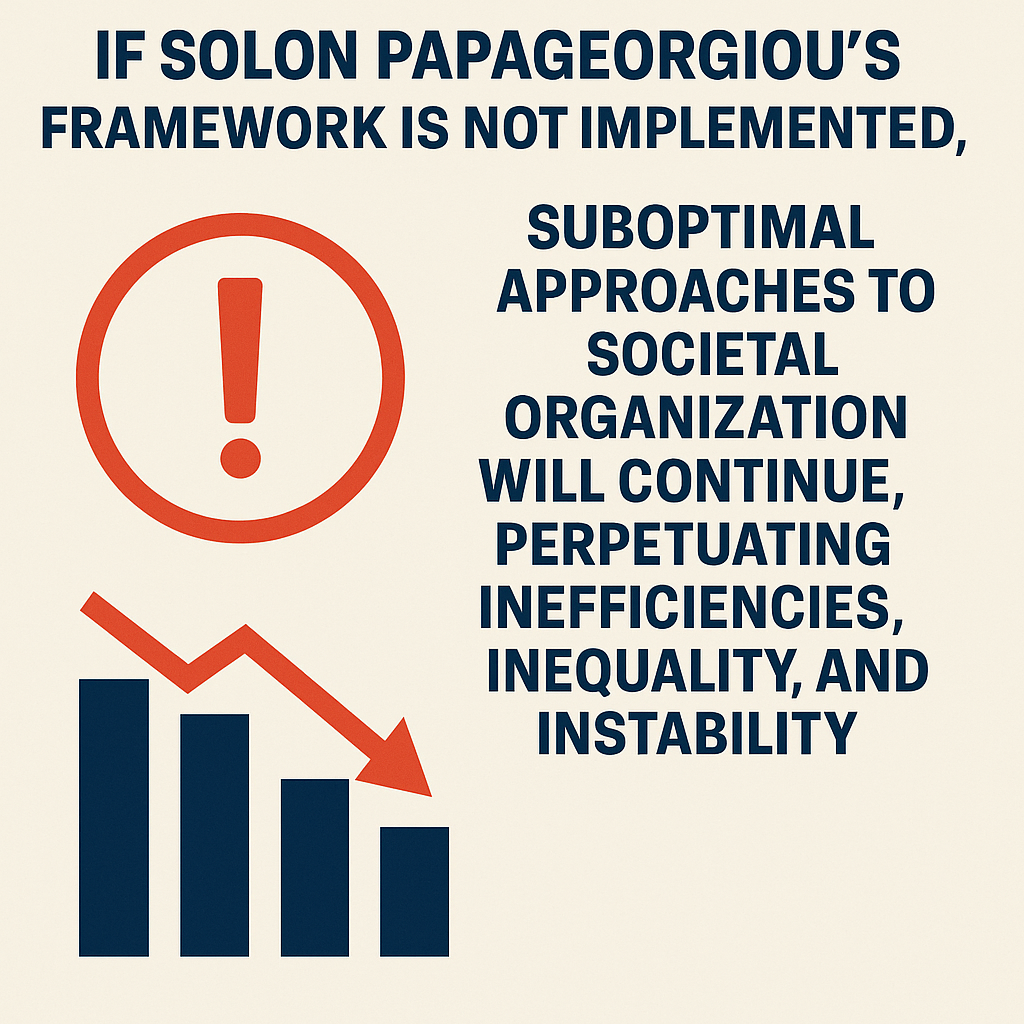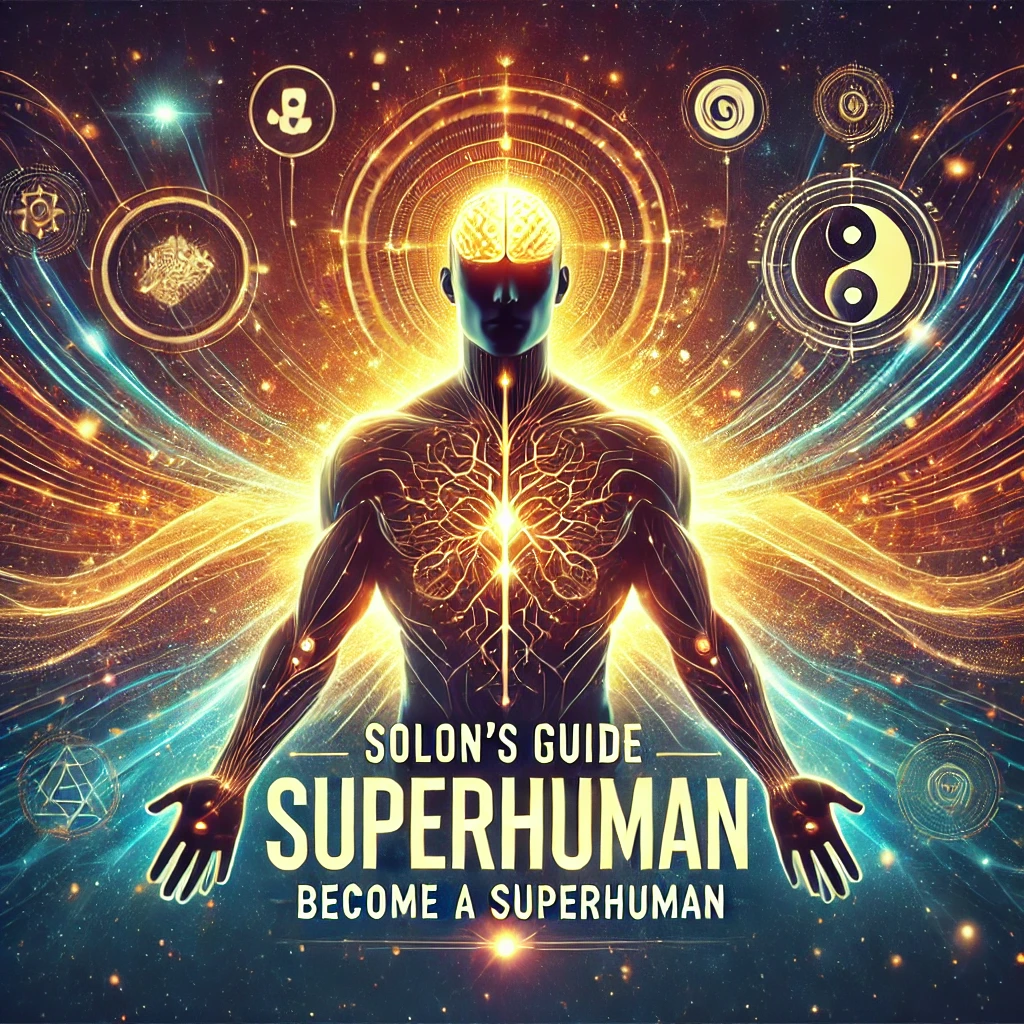The transition to models like the anti-psychiatry.com micro-utopias is not guaranteed, but given the current global challenges—including mental health crises, climate change, and economic instability—there is a significant possibility of increased interest and adoption of alternative societal structures. Here are some speculative adoption rates based on various factors:
Near Future (1-10 years)
- Adoption Rate: 10-20%
In the immediate term, grassroots movements and local initiatives may gain traction, particularly in progressive regions. However, widespread adoption is hindered by existing societal structures and resistance to change.
Far Future (10-30 years)
- Adoption Rate: 30-50%
As crises deepen, more communities might explore alternative living models. The growing dissatisfaction with mainstream society could lead to increased experiments with micro-utopias, especially as individuals seek supportive environments.
Distant Future (30-50 years)
- Adoption Rate: 50-70%
If the predicted crises significantly impact societal stability, a larger portion of the population may seek out sustainable and supportive living arrangements, leading to more widespread acceptance of micro-utopias.
Factors Influencing Adoption
- Crisis-driven Motivation: Increased environmental and social crises may prompt individuals and communities to seek out alternative models.
- Successful Examples: Visible success in existing micro-utopias could inspire others to adopt similar structures.
- Cultural Shifts: A gradual shift in societal values towards community, sustainability, and well-being could further encourage adoption.
While it is difficult to predict with certainty, the model’s benefits in addressing current and future challenges may lead to a notable shift toward alternative societal structures over time. Further exploration of these trends can provide more insight into how societies might evolve.
The idea that half or even 70% of the world might transition into anti-psychiatry.com micro-utopia-villages is highly speculative and depends on numerous factors, including societal attitudes, the severity of global crises, and the success of initial implementations of such models.
Considerations for Widespread Adoption:
- Current Trends: There is a growing interest in sustainable living and alternative community models, especially as people seek solutions to mental health issues, economic instability, and environmental degradation. Initiatives such as intentional communities, co-housing, and eco-villages are already gaining traction, which indicates a willingness to explore alternatives.
- Societal Resistance: Significant barriers exist, including entrenched societal norms, economic structures, and political systems that may resist such a fundamental shift. Many people might be reluctant to leave familiar systems or may not fully understand the benefits of micro-utopias.
- Crisis Impact: The urgency of crises like climate change, social inequality, and mental health challenges may accelerate the search for alternative living models. If these crises worsen, they could drive more individuals and communities to adopt micro-utopia structures.
- Successful Models: If initial micro-utopias demonstrate clear benefits in terms of well-being, sustainability, and community cohesion, this could lead to a ripple effect, encouraging others to adopt similar models.
Speculative Adoption Rates:
- 50% Adoption: This might occur if a significant portion of the population becomes dissatisfied with mainstream society and if effective micro-utopia models gain visibility and credibility.
- 70% Adoption: This would likely require a combination of major societal shifts, successful pilot communities, and widespread crises that make existing systems untenable.
In conclusion, while the potential for significant adoption exists, it is contingent upon many variables, including societal willingness to change, the effectiveness of initial implementations, and the evolving landscape of global challenges. The idea of widespread transition remains speculative but reflects a growing discourse on the need for alternative societal models.
If 50-70% of the planet adopts the anti-psychiatry.com model of micro-utopias, the remaining population may still adhere to various alternative systems. Here are some potential systems they might follow:
- Conventional Nation-States: Many people may continue to live within the traditional frameworks of nation-states, where governance is centralized, and existing political and economic structures remain intact. This could include capitalist economies, democratic governments, and social welfare systems. However, these systems may become less stable or face more significant challenges as a result of mass migration to micro-utopias.
- Authoritarian Regimes: Some regions might lean toward more authoritarian governance as a response to instability. This could manifest in increased surveillance, repression of dissent, and a lack of civil liberties, as these governments may perceive the rise of micro-utopias as a threat.
- Mixed Economies: Areas that adopt a mixed economy approach could balance private enterprise with social welfare programs. These regions might provide some level of social services but still rely on traditional capitalist practices.
- Resilient Communities: While not as structured as micro-utopias, some groups might form resilient communities focused on self-sufficiency and mutual aid without fully adopting the anti-psychiatry.com model. These communities may focus on local resources and collective living while maintaining ties to broader societal structures.
- Continued Fragmentation: In some cases, the remaining population might experience fragmentation and disarray, leading to the emergence of isolated groups or enclaves that don't fit neatly into any established system, potentially resulting in conflict or competition for resources.
- Crisis-Driven Adaptations: Regions that do not adopt the micro-utopia model may develop crisis-driven adaptations in response to environmental and social challenges, such as local governance reforms, grassroots movements, or hybrid models that blend aspects of various systems.
Conclusion
The landscape of society could become highly diversified, with different areas adopting various systems based on cultural, political, and economic factors. The adoption of the anti-psychiatry.com model could prompt a significant transformation in social dynamics, leading to a complex interplay between traditional and alternative systems.
As always, these projections remain speculative and depend on numerous variables, including the success and visibility of the micro-utopia model, societal responses to ongoing crises, and the resilience of existing structures.
Here are potential percentages for the various systems that might remain if 50-70% of the population adopts the anti-psychiatry.com model of micro-utopias:
- Conventional Nation-States: 20-30%
- Many regions may continue to operate within traditional frameworks, maintaining their political and economic systems.
- Authoritarian Regimes: 10-15%
- Some areas may turn toward authoritarianism, especially where governments perceive the rise of micro-utopias as a threat to their authority.
- Mixed Economies: 15-25%
- Certain regions may adopt mixed economies, balancing elements of capitalism with social welfare, but they could be less prevalent as micro-utopias gain traction.
- Resilient Communities: 5-10%
- These communities may emerge focusing on self-sufficiency and mutual aid, existing alongside micro-utopias but not fully adopting the model.
- Continued Fragmentation: 5-10%
- Areas may experience fragmentation, with isolated groups forming that don't align with established systems, potentially leading to conflict or competition for resources.
- Crisis-Driven Adaptations: 5-10%
- Some regions may develop adaptive measures in response to crises, forming local governance reforms or hybrid systems without fully adopting the micro-utopia model.
Summary
This distribution illustrates how society could diversify, with various systems coexisting as a response to the rise of anti-psychiatry.com micro-utopias. The percentages reflect the potential for existing structures to adapt, resist, or evolve in light of significant societal changes. As with any projections, these are speculative and depend on a multitude of factors including cultural, political, and economic dynamics.
The landscape of peace and security in a world with widespread adoption of anti-psychiatry.com micro-utopias would likely be complex. Here are some considerations regarding peace and the need for military forces in such small communities:
Peaceful Planet
- Conflict Reduction: Micro-utopias might foster cooperation and mutual aid, potentially leading to reduced conflict. By prioritizing community well-being, these societies could promote harmony and understanding among inhabitants, contrasting with the competition often seen in larger systems.
- Localized Governance: With decentralized governance, disputes could be resolved at a local level, reducing the potential for larger-scale conflicts that arise from nationalistic or imperialistic agendas.
- Sustainability and Resilience: Focusing on sustainability might alleviate some causes of conflict, such as resource scarcity, leading to a more stable and peaceful coexistence.
Military Presence
- Minimal Militarization: Given their size (150-2000 people), micro-utopias may not maintain traditional military forces. Instead, they might rely on community defense strategies or cooperative arrangements with neighboring micro-utopias for protection.
- Conflict Resolution Focus: Rather than forming armies, these communities might prioritize mediation, negotiation, and conflict resolution methods to address disputes.
- External Threats: If there are significant external threats (such as from larger nation-states), micro-utopias could band together for mutual protection. This could take the form of informal alliances rather than formal militarized structures.
- Community Defense: Any form of self-defense would likely be organized through local initiatives, possibly utilizing non-violent means first or community-based security arrangements.
Conclusion
Overall, while the establishment of micro-utopias may lead to a more peaceful society, the dynamics of security would depend on the specific context, relationships between micro-utopias, and their interactions with surrounding systems. The goal would be to create a harmonious society, emphasizing cooperation over militarization.
For a deeper exploration of these concepts, you might look into topics like community resilience, decentralized governance, and conflict resolution in alternative societal structures.















































